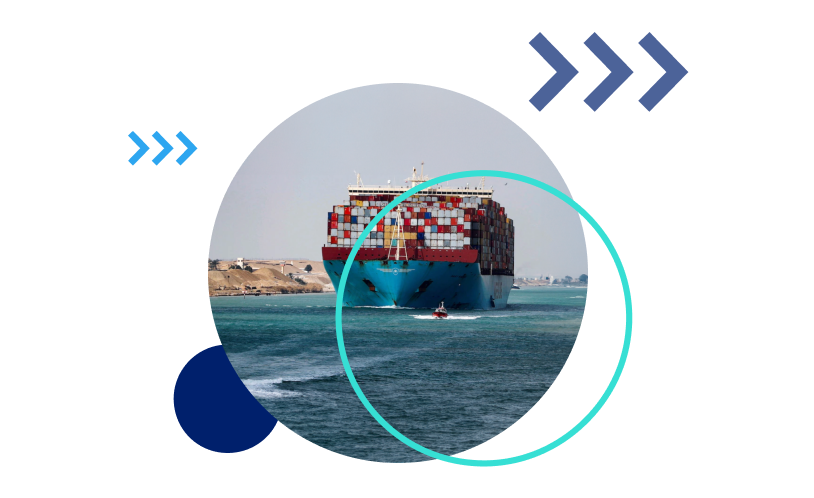This is a contributed article from Contributed Article By Cory Levin, a seasoned logistics professional.
Air cargo is a popular freight shipping method because, as everyone knows, it has a shorter transit time than what is often the only alternative – ocean cargo.
But before you make the booking, there’s a lot more to consider, including how to protect the shipment, and whether the shipment is even permissible cargo.
Is Your Product Airworthy?
IATA Restrictions
The International Air Transport Association (IATA) has developed regulations on what hazardous materials may not be shipped via air. The decision is based on whether it presents a safety risk to the aircraft or the personnel on board.
Their manual includes a long list of restricted materials, which, essentially, can be broken into nine broad categories—explosives, gases, flammable liquids, flammable solids, oxidizing substances, toxic substances, radioactive materials, corrosives, and miscellaneous items – which includes dry ice, lithium-ion batteries, and first aid kits.
Some items are in otherwise restricted categories, but the regulations single them as not being restricted. These include prescriptions, medical devices, cosmetics or food without FDA-approved labels, lighters, lottery tickets, human remains, and unidentifiable materials.
Some items aren’t listed but are nevertheless restricted because one of their components is a restricted item. These include surf waxing kits and self-inflating life vests.
Dangerous goods are further categorized from a scale of E0 to E5, and items in each category can only be shipped in certain amounts. In category E0, it is prohibited to ship in any quantity. A category E5 can be shipped in quantities up to 300 grams or 300 milliliters.
Carrier Restrictions
While the International Air Transport Association (IATA) provides guidelines classifying certain items as non-hazardous for air transportation, it’s crucial to recognize that individual freight carriers retain the discretion to refuse the carriage of specific items. This discretion is particularly evident in the transportation of live animals, as well as delicate and valuable items such as fine arts, antiques, and jewelry.
Despite meeting IATA’s non-hazardous criteria, freight carriers may decline to transport live animals due to the specialized care and handling required, ensuring the well-being of the animals during transit. Similarly, fine arts, antiques, and jewelry may be subject to refusal by carriers due to their high value and susceptibility to damage. Carriers often impose stringent conditions for the transport of such valuable items, necessitating additional precautions and security measures.
Therefore, shippers and consignees must not only adhere to IATA regulations but also be aware of and comply with the specific policies and restrictions imposed by individual freight carriers. This emphasizes the importance of communication between shippers, carriers, and recipients to ensure a seamless and secure transportation process, especially when dealing with items that may be subject to carrier-specific restrictions despite being deemed non-hazardous by IATA.
Import Restrictions
To prevent the risk of confiscation by customs authorities, you should also check the rules and regulations for the incoming country.
Is Your Packing Airworthy?
Cargo packing is very different from packing for a vacation. You need to pack to protect against the following:
- Punctures or abrasions,
- Productive damage (compressive forces from shipment stacking, or vibration during transit),
- Rough shipment handling (many shipments actually get dropped).
Due to these risks, packed items with care so that all shocks are easily absorbed. There are several types of packing materials to choose from:
- The most common shipping container is the gaylord box, aka cardboard box. These boxes are weakest at their edges and lose strength when exposed to humidity, so they should only be used once.
- Wooden crates are also popular shipping methods, sturdier, but more expensive than their cardboard counterpart. If done properly, wooden crates are perfect for rough air cargo. Look for crates with interlocking corners – this reinforces the crate at what is traditionally the weakest point. However, don’t put fasteners into the end grain because it will probably destroy it and possibly also its contents. Instead, place diagonal braces on each side for strengthening.
- Shipping pallets made of wood or plastic are also good shipping options. Carriers and freight forwarders often prefer pallets because the movers can simply load the crate and go without having to come into direct contact with the package. The pallet must be large enough to accommodate the shipment without any of the shipment hanging over the edge of the pallet. The shipper should be aware of the pallet’s capacity and keep within it.
And there are some scenarios when extra care needs to be taken with packing. Make allowance for shipments that are oddly shaped, extremely fragile, heat or cold-sensitive, likely to damage other items in the shipment, or other shipments if they break or leak. In these instances, make sure each item is carefully protected and strategically placed within the pallet.

By Air, Sea, Or Source Locally?
Unfortunately, shipping cargo is not as simple as mailing a letter, and there are a lot of considerations to take into account before deciding to go by air rather than sea, or even sourcing locally.
Transit Time
Ocean freight has much longer transit times than air freight, so rule it out for urgent orders. Rule it out, too, if the estimated delivery date by sea falls before your deadline, if there is a lot riding on that deadline – for instance, a new business deal or a seasonal product. That’s because ocean shipments are much more subject to delays like bad weather and port congestion than with air shipments.
Freight Cost
If the transit time is not a major factor, gain, ocean freight would be the best option simply because air freight is much more expensive.
Overall Cost
You are wasting money on air freight if the landed cost (sell price plus freight) is higher than the buy price at the destination or the expected sell price.
Freight Services
When choosing a freight forwarder or carrier, consider services as well as price. Is tracking available? Is it real-time? Do you require door-to-door pickup and delivery? Do they provide an overnight service?
Customs
Customs is also a consideration if shipping internationally. How much duty will the shipment incur? How likely is it to be held up by customs investigation?
Often the first and only thing shippers take into account when considering air cargo, is that it’s quicker, but more expensive than ocean freight. But you need to take several other factors into consideration, not the least being whether the packing is airworthy and the shipment is flightworthy.



